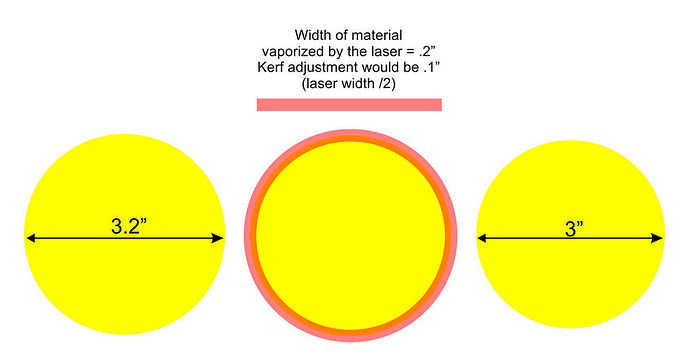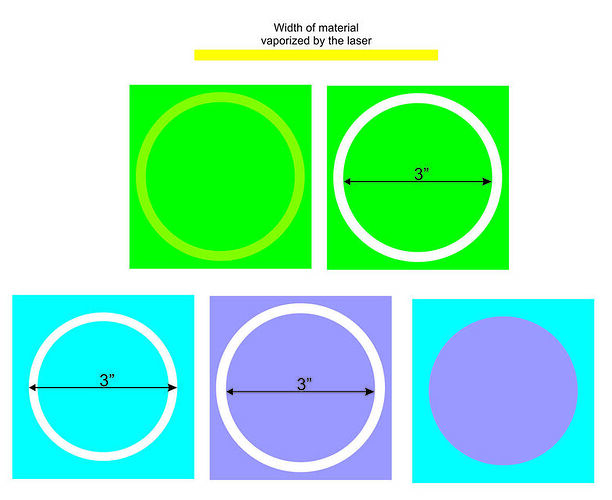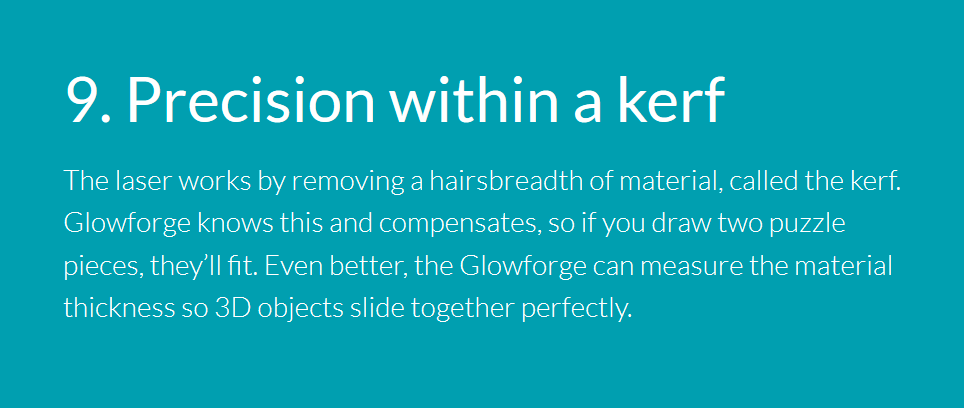Going back to original question - To kerf or not to kerf…that is the question.

Keep in mind that the kerf on this thing is going to be as wide as a sheet of copy paper is thick. It’s not going to have any impact on most materials, and if it is an issue (say that you want to create one of @smcgathyfay’s cool inlay style objects out of acrylic, and you don’t want to use glue to keep the pieces in place), then you can avoid the issue entirely by simply buying the proofgrade material.
If you know you won’t be using the proofgrade material, and you absolutely must have a tight fit, then just adjust the size of the holes and shapes to compensate for the kerf when you design it in the first place.
The Offset Path tutorials that I just posted show how to do that for irregular shapes in Inkscape, Illustrator and CorelDraw. Skip the Auto-Trace part and just do the Offset or Contour step on your vectors.
It’s even easier to do in Fusion 360, just assign the correct dimensions in the sketch. Or create a little formula that lets you adjust it no matter what the kerf is.
(You don’t have to put two sets of lines into the sketches in F360, you can just set up a parameter that changes the size of the parts automatically. Everything gets laid out flat when you design for laser - it cuts 2D.)
Or…we are still going to have to take the sketches out of Fusion 360 into either Illustrator or Inkscape to convert them anyway…you can just do a big batch offset in there if you prefer.
One time and boom - they’re all done.
I’m not trying to make light of the kerf question, because I have thought about it, and figured out a couple of ways around it.
I’ve also decided to wait and see if it’s even an issue. I’m betting that for most of the stuff that we do, it won’t be.
Now slot sizes, tabs, and nominal thickness - that’s another puppy. If you’re planning to build 3D constructions out of widely differing materials, or if you are planning to sell your designs as files, you will want to look into parametric design, because it saves a whole lot of rework on your model.
My 2 cents…FWIW. 
















